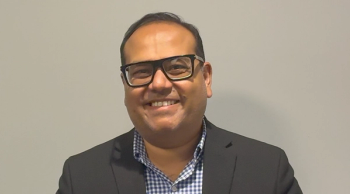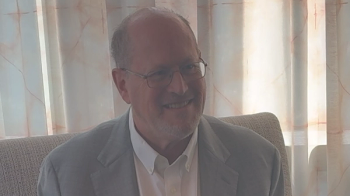
Oncology NEWS International
- Oncology NEWS International Vol 6 No 4
- Volume 6
- Issue 4
Balanced Budget Could Threaten Research
SEATTLE--"In every area of government, the most important legacy of the last Congress was the agreement to balance the budget by the year 2002," David Goldston said at the annual meeting of the American Association for the Advancement of Science.
SEATTLE--"In every area of government, the most important legacyof the last Congress was the agreement to balance the budget by the year2002," David Goldston said at the annual meeting of the American Associationfor the Advancement of Science.
Achieving a balanced budget has "become an article of faith"on Capitol Hill, and this will inevitably result in "very tight fundingfor science," said Mr. Goldston, aide to Rep. Sherwood Boehlert (R-NY),the second ranking member on the House Science Committee.
Another speaker, J. Paul Gilman, PhD, executive director of the NationalResearch Council's Commission on Life Sciences, said that the last Congress,the 104th, proved more generous to research in its second year than inits first.
For fiscal year 1996, the Congress appropriated $71.1 billion in R&Dfunding, an increase of 0.4%, but upped that figure for fiscal year 1997by 4% to $74 billion. However, Dr. Gilman noted, the Congress raised basicresearch funds only 2.7% in fiscal 1997, compared to a 4.8% increase infiscal 1996. The "hallmark" of the 104th Congress' largess forscience was in the biomedical field, he added.
Mr. Goldston agreed that "science has done very well in the lastfew budgets." However, his assessment of the 105th Congress cast doubton whether this funding level can be maintained, given the commitment toa balanced budget.
Scientists, he warned, need to recognize the new climate on CapitolHill and find ways to work within the evolving environment to ensure thatscience will continue to receive strong consideration in the budget process.Even this will not prevent reductions in funding, "but there is adifference between being cut and being slaughtered," he said.
Three Reasons to Worry
Three key factors make the continuation of strong science funding moreproblematic than many in the research community appear to accept, Mr. Goldstonsaid.
First, science funding has prospered because a few powerful membersof Congress have given it their strong support. As it becomes increasinglydifficult to meet all the demands and still balance the budget, this supportprobably won't be sufficient to prevent significant cuts.
Second, while science enjoys broad support among members of Congress,this supports does not run deep. It could ebb easily as members battleover where to cut funds.
Third, only now is Congress beginning to understand how difficult balancingthe budget will be. "The cuts are going to get tougher," he said.
Mr. Goldston also described three misconceptions that may handicap scientistsin dealing with funding issues.
Insular thinking. Researchers tend to view budget cuts in thesciences as directed specifically at science, rather than as the resultof trade-offs in accommodating the needs of competing priorities with thefunds available. "Such decisions are about the budget, not about science."
The "Vannevar Bush Syndrome" or "If we onlyhad another grand report." The Bush report, crafted by the directorof the Office of Research and Development at the end of World War II, recommendedthe creation of a single civilian-oriented national science agency thatwould be insulated from politics. Mr. Goldston pointed out that most ofthe things envisioned in the report never came to fruition. "Sciencegrew because of factors in the social and economic climate, not becauseof anything to do with science per se," he contended.
Lobbying on Capitol Hill. Individual scientists can make a differencein maintaining a proscience environment in Congress, but trooping to CapitolHill to lobby members isn't the most effective way. Rather, he suggested,scientists should try to reach members of Congress when they are at homemeeting with voters.
Articles in this issue
over 28 years ago
Mucin Markers May Play Role in Finding Breast Cancer Recurrencesover 28 years ago
Myoepithelial Cells May Be Key to Suppression of DCIS Growthover 28 years ago
Some Breast Cancer Patients May Not Need Node Dissectionover 28 years ago
Irinotecan Easier to Give as Physicians Gain Experienceover 28 years ago
Guidelines Highlight Staging Technologies For Pancreatic Cancerover 28 years ago
Lumpectomy Alone Appears to Be Safe In DCIS Patientsover 28 years ago
Multimodality Treatment Appears Safe for Pregnant Womenover 28 years ago
McGivney Outlines 'Ambitious Agenda' For NCCN in 7 Areasover 28 years ago
Capecitabine Studied In Advanced Colon CancerNewsletter
Stay up to date on recent advances in the multidisciplinary approach to cancer.


















































































